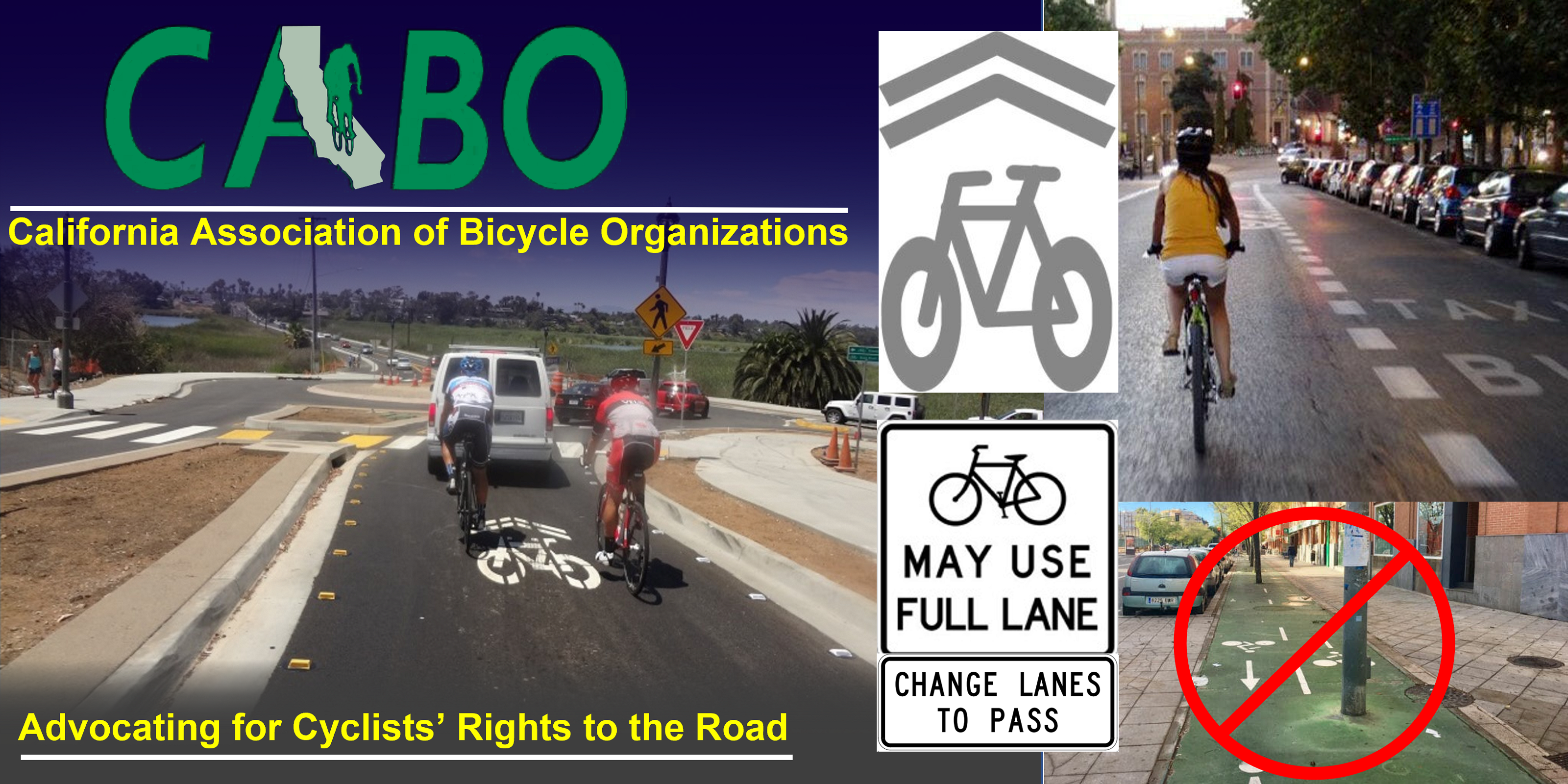State Assembly Member Bob Wieckowski
State Capitol, Room 4162
Sacramento, CA 95814
SUBJECT: CABO opposition to AB 819 unless amended
Dear Assemblymember Wieckowski:
CABO is the association of California’s bicycle organizations. In our meeting last week with Ed Imai of the Assembly Transportation Committee, Dave Snyder of the California Bicycle Coalition, and Heather Falkenthal from your staff, we heard proposals that AB 819 permit local agencies to follow “innovative” bikeway design guidelines from sources other than the Caltrans Highway Design Manual, as currently mandated by law.
We are always open to innovative ideas, but a number of facility innovations that initially seem attractive also appear to present significant safety issues. The available research on these facilities is not always reliable, despite being cited in a guide produced by a private organization. Legitimizing these designs, in effect, by statute, rather than by technical review, could expose bicyclists to potentially dangerous facilities. Continue reading
